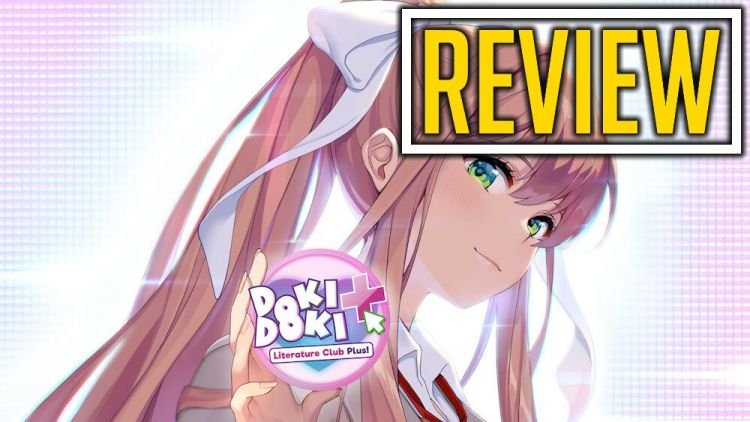Back in 2017, a small unassuming indie game entitled Doki Doki Literature Club arrived on Steam for free. On the surface, it appeared to be a cute visual novel about a boy joining a literature club to find love. How sweet. But digging a little deeper, or rather, playing for long enough would reveal a story of absolute existential dread. It hooked people thanks to its surprise genre flip, memorable characters, and hidden secrets embedded in the game files. Doki Doki Literature Club Plus.
When developer Team Salvato and publisher Serenity Forge revealed Doki Doki Literature Club Plus, questions arose. Is it a remaster of the original game? A director’s cut? A sequel? Or something else? In short, the answer is all of the above. You might even say Doki Doki Literature Club Plus is a library of material old and new (this will not be the first literature related metaphor, nor the last. Consider yourself warned).
Game Name: Doki Doki Literature Club Plus
Platforms: PlayStation (reviewed), PC, Xbox, Switch
Developer: Team Salvato
Publisher: Serenity Forge
Release Date: June 30th, 2021
Price: $14.99 (Digital), $29.99 (Physical)
Turning a new page
This library of sorts includes the original Doki Doki Literature Club game, still arguably one of the most terrifying games of all time. And now, it has full HD visuals. It also includes the “side stories,” a modest name for an entirely new visual novel building upon the world of the literature club. On top of that it’s got unlockable poems, concept art, and music tracks, and that’s just the icing on the cupcake. Dig a little deeper and you’ll find hidden secrets and files, those from the original game and of course, entirely new ones.
But let’s not read ahead. For the sake of those new to Doki Doki, what’s the main game about? Playing as a student coming back to a new year at high school, your bubbly childhood friend Sayori convinces you to join the new literature club. There you meet the charismatic Monika, the president of the club who wishes to get new members. The only two others at the moment are the standoffish Natsuki and shy Yuri. The club activities revolve around writing and sharing poetry. Your character decides he’ll use his poems to win over one of these literate ladies. But little does he know what he’s signed up for.
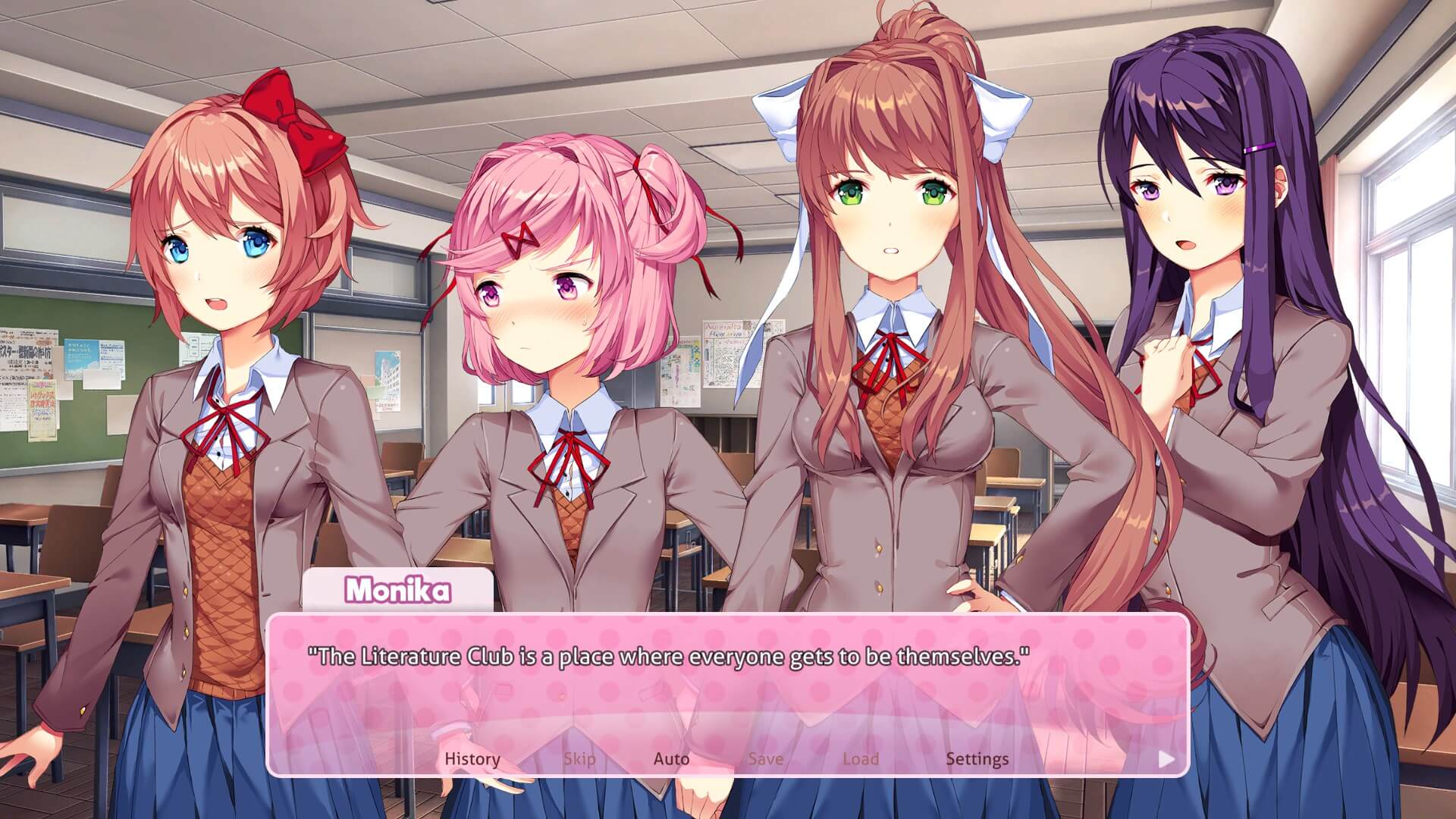
If you think Doki Doki Literature Club tells the story of a boy who woos a girl with his poetry in a comfortable club setting, making friends, and becoming a better writer along the way, you will find yourself playing the wrong game. And that’s part of what makes it so horrifying. The writing discussions act as a smokescreen for the actual horror plot of the game, and the quality of them helps sell the bait and switch. As does a catchy, whimsical soundtrack scoring it all. Right when you’re certain that this is definitely, absolutely, 100% not a scary game, Doki Doki Literature Club dunks you into its pool of psychological horror and then hangs you out to dry.
Before going full horror, the main story teases what’s to come in subtle (and some not so subtle) ways, through foreshadowing and brief uncanny moments. There’s one infamous line in particular that seems totally innocuous at first but proves terrifying upon repeat playthroughs. As for the second section? If you’ve ever joined a club, company, or organization that started out with good intentions and devolved into chaos, this may prove cathartic.
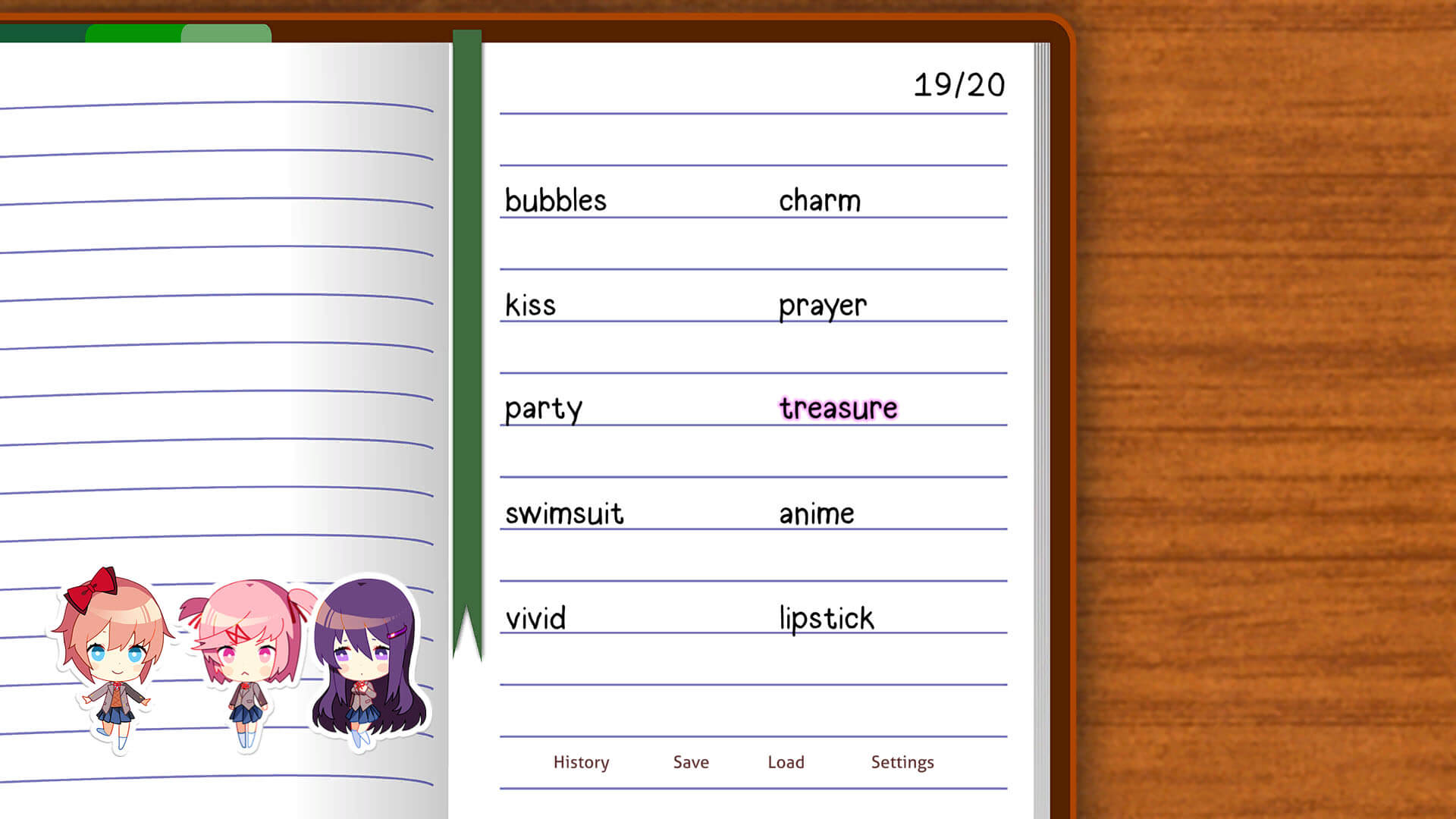
As a horror visual novel masquerading as a dating sim, Doki Doki Literature Club offers fairly simple gameplay. In the first section, this mostly consists of choosing words for poems to catch the eye of your chosen paramour. This isn’t too hard. In the second section, things get a bit more meta as you solve occasional puzzles based on the layout and constraints of the visual novel medium.
One of the only changes to the original game is that it now offers the option to review detailed content warnings or enable them at any time from the settings menu. To play, you have to agree that you’ve noted the game’s rating and consent to exposure of disturbing content. This is great for younger players and people who have no idea what they signed up for, but it also serves as a great way to build trepidation.
Okay, everyone! So what’s new?
Exiting the main game brings you to the desktop of “Metaverse Enterprise Solutions.” An apt name, as this fictional company is meta in both structure and content. It’s both a fun solution to the original game’s computer-centric gameplay and a way to integrate Doki Doki Literature Club Plus’s extra content and lore. These include pieces of concept art and a soundtrack player, featuring lovely new tracks that fit right into the world of the game.
In the main game, once things go a bit… wonky… the desktop contains supplementary files to reflect this. In the original game, these were only revealed by poking around in the actual PC game files, but now they’re a part of the game itself. Sure, the shift removes some mystique, but it makes the game less obtuse. To remedy this, the game adds bonus Easter eggs that do require sifting various settings. Players who enjoyed discovering secrets about the world of the game will delight themselves even more.
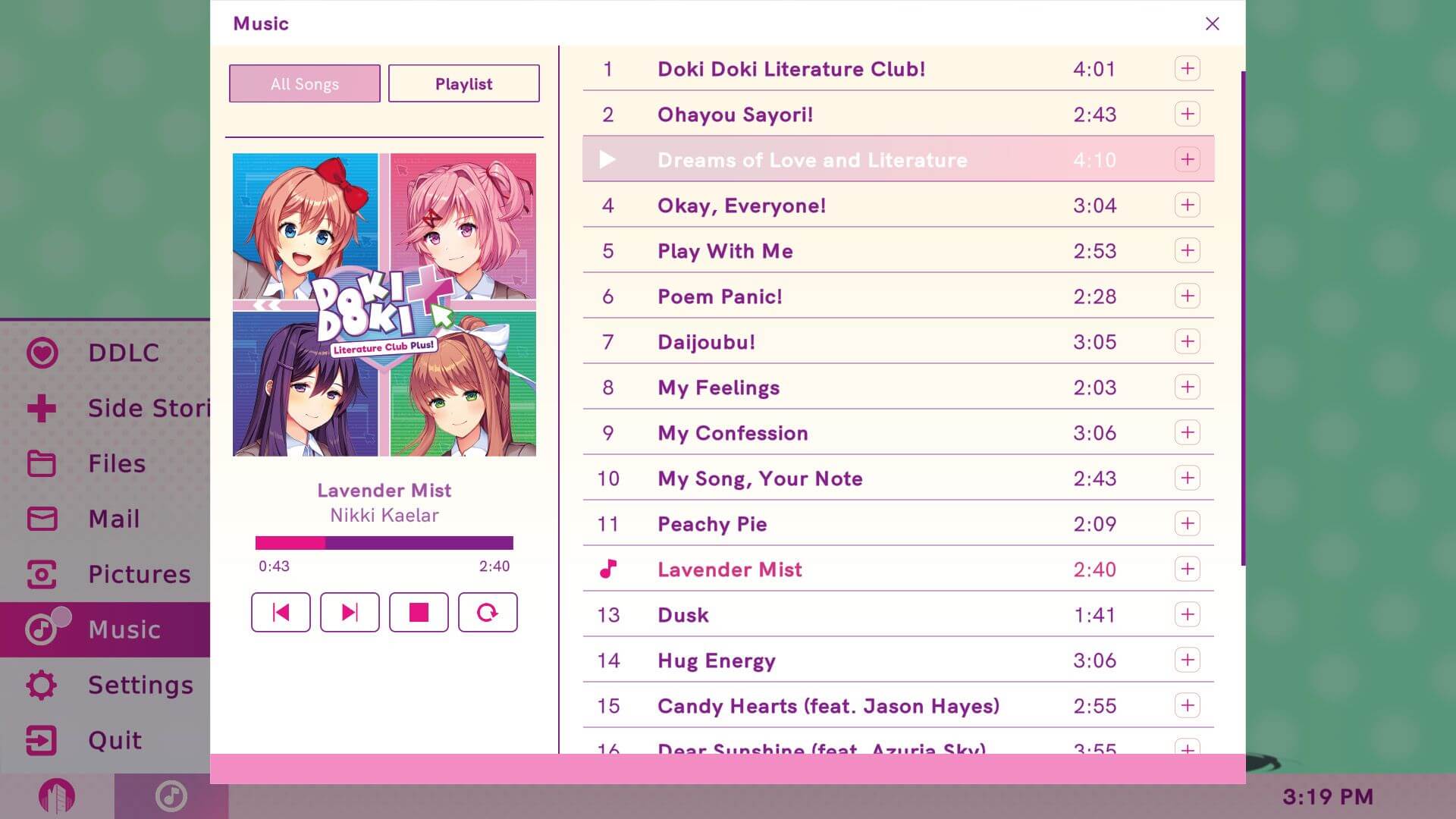
The biggest addition comes in the form of the new side stories. They take place in a kind of alternate timeline, telling a new story of the founding of the literature club. Taking the form of a straightforward visual novel, they lack the scares of the main game, for better or worse. But what they lack in horror and gameplay, they more than make up for in wish-fulfilment and world-building. If the original story is about a club where everything goes awry, the side stories tell of a club where everyone makes it the best it can be. The characters still have many of the same problems, but this time around they help each other and strengthen their friendships.
Each side story takes about 20 minutes to read through, split into two parts, and focuses on a theme such as trust or self-love. They’re wholesome, humorous, and heartwarming. They even pass the Bechdel test. And in several ways, they improve upon the main story. For example, the original game contents itself with including mental health topics, but the side stories actually have something to say about them. It may not seem as shocking as a sudden genre flip to horror, but there’s a subtle surprise to how much this visual novel dedicates itself as a force for positive values.
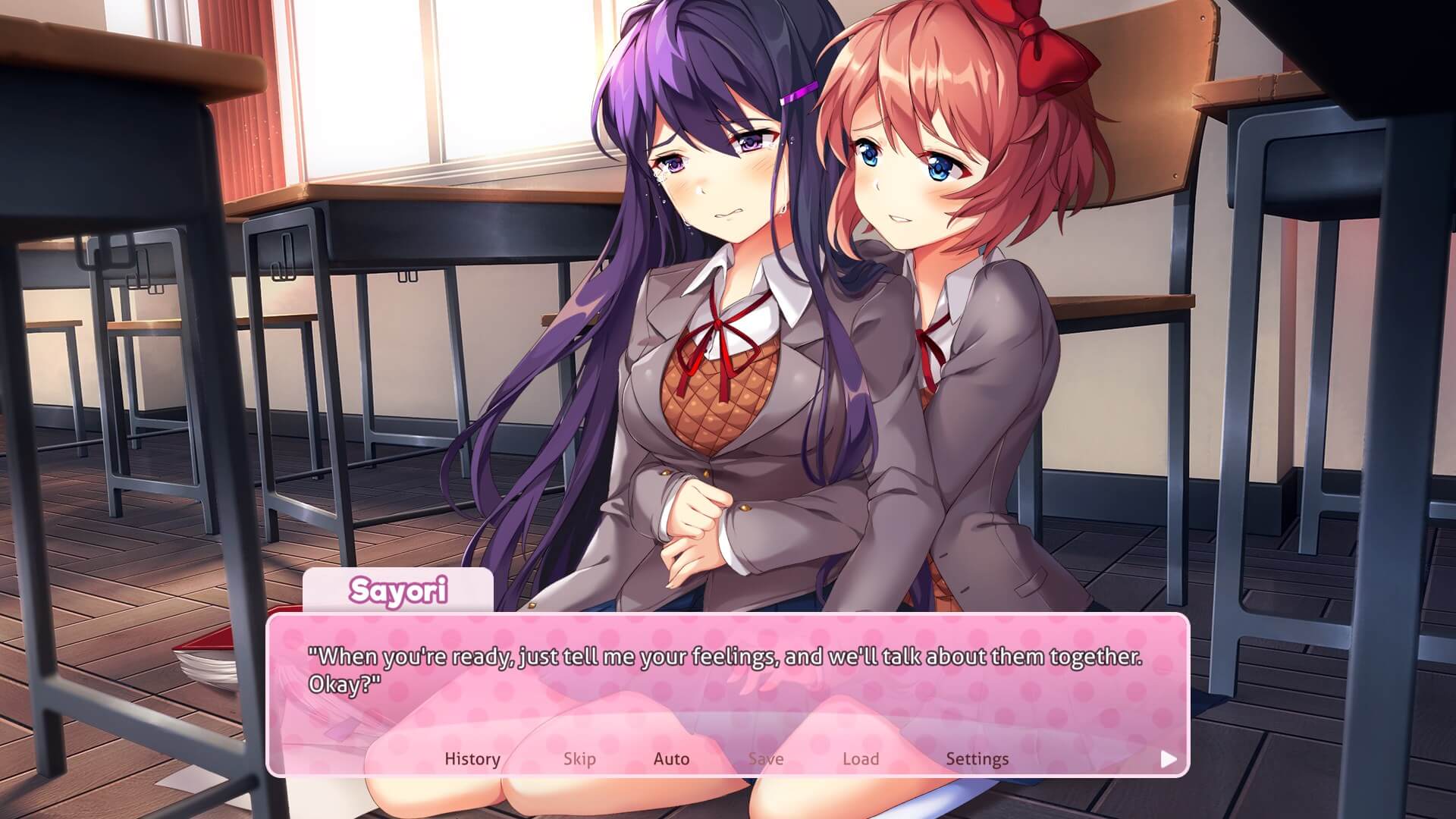
Back to the desktop, the “Metaverse” provides a whole meta-story. I don’t want to spoil it, but if the side stories explain how the literature club was founded, the Metaverse explains why it exists. Fans of the game will relish the extra lore. The more you poke around and play, the more hidden nooks you’ll uncover, akin to visiting a used bookstore and finding something new each time.
So which is better, the original game or the extra stories and content? Notably, the original experience and the side stories prove quite different from each other in form, genre, and content. But like the characters in the game themselves, people may have different preferences. Thankfully, you don’t have to choose. Doki Doki Literature Club Plus has it all. Want to play a dating sim turned psychological horror? You’ve got it. Prefer a more wholesome visual novel experience? That’s there too. You can even delve into the lore of the Metaverse if you enjoy uncovering mysteries. Like joining the literature club itself, you can experience whatever kind of story you like. That’s the beauty of Doki Doki Literature Club Plus.
Doki Doki Literature Club Plus Review
With new stories, secrets, soundtracks, Sayori snacks, and so much more, Doki Doki Literature Club Plus proves the definitive way to experience an already great game.
Pros
- Original game still as terrifying as ever.
- Wholesome side stories with positive messages and mental health representations.
- The absolute comedic unit that is Sayori.
- New puzzles and mysteries surrounding “Metaverse Enterprise Solutions.”
- Addition of concept art and new music tracks.
Cons
- No new scares (which may actually be a relief).
-
Doki Doki Literature Club Plus Review


